The Evolution of Blockchain Games and a Peek at What’s to Come
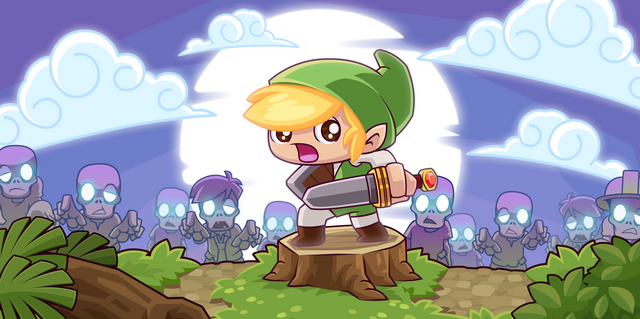
The original Chinese article was published on May 11th.
Translation credits: Stephanie & Robert @Loom Network
With so many opportunities looking us straight in the face over the past decade or so, we still seem to be looking into an unclear future.
As an in-depth participant in blockchain technology and gaming, I’m going to walk you through the development of blockchain games over the past six months. I’ll explore the value that blockchain brings to games, the challenges they bring to developers, and then circle back around to the essence of games.
First, Let’s Talk About Cognitive Thresholds.
The screenshot on the left, below, is a WeChat conversation of mine from 2013. I was amazed that Bitcoin’s price had already gone up to more than 200 RMB (about US$30), and even thought about short-selling it at 250 RMB.
The screenshot on the right shows my wallet. I sold all the Bitcoin I had on Coinbase at the end of 2014, before returning to China.
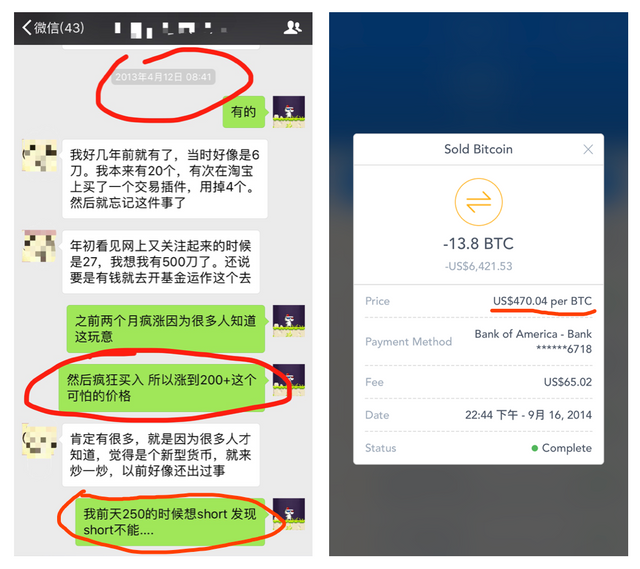
We ALL know what happened after that.
But have I ever regretted selling it? Nope.
Even if I didn’t sell it in 2014, I probably wouldn’t have kept it until today. I would have either sold it at $200, during the 2015–16 bear market (and probably shed a tear or two), or make a killing at the $1000 high in early 2017.
Essentially, I was not mentally prepared.
Based on my understanding, cognitive threshold is two-fold:
- The willingness to cognize
- The process of cognition
Even for intelligent people, it’s difficult to discern the potential of new technologies, especially disruptive technologies. Instinctively, criticism always comes before understanding. On one hand, the skepticism comes from their own excellence — their deeper understandings of the logic and nature of such things. On the other hand, it comes from confidence — the self-esteem that derives from using methodology to explain unfamiliar ideas and getting it mostly right, time and time again.
Thus, when I mentioned the concept of Bitcoin to a few of my Stanford Financial Math graduate friends in early 2013, it was easy for them to dismiss the idea of something that would challenge the existence of central banks and the current monetary system. These people dreamed of working in famous Wall Street investment banks and hedge funds, so of course they wouldn’t throw a penny at the technology behind Bitcoin, let alone understand what it is.
In the era where fragmented and second-hand information prevails, one can easily form an “opinion” from all the noise on the internet.
“I heard that the power used to mine Bitcoin has surpassed x countries’ combined.”
“Most ICOs are crap. Speculation makes them popular.”
These types of statements may be true, but they’re only one-sided.
Recently, I’ve met up with quite a few talented people, and many of them still hold such one-sided opinions about blockchain technology. As a result, they didn’t have the urge to truly understand the underlying logic. However, in my humble opinion, once they pass this cognitive threshold, the process of understanding the blockchain will always be fun and full of surprises.
The past three years of starting my own business didn’t necessarily make me rich. But the best things I got out of it were the empty cup mentality and a set of methodologies for understanding new ideas.
The process of understanding the blockchain was pretty hard for me. Here’s what I did from November 2017 to March 2018:
- An intensive study of 30 whitepapers and skimmed through about another 100 (because most of them were pretty much the same)
- Tried out more than 200 DApps, starting with CryptoKitties
- Read 200 blockchain-related articles on Medium
- Went through the entire DApp development process
- Researched various products in the industry (exchanges, wallets, media, etc.)
Once I felt that I was officially introduced to the blockchain, I partnered up with some friends to create dapp.review and a WeChat announcement channel called DAppReview.
In the following words, I want to briefly describe the opportunities that lie in blockchain games.
Is “Blockchain Game” a Pseudo-Statement?
A lot of people, including professional gaming media outlets and companies, view “blockchain + game” as having the following:
- Unclear Underlying Ecosystem – A lot of public game chains and sidechains are still in the early stages, so there’s no universal standard.
- Unsatisfying Performance – Ethereum has a transaction capacity of less than 20 transactions per second and charges a gas fee for every action.
- No Real Gameplay – Current blockchain games all suffer from having a simple mechanism and a short life cycle.
- A Lack of Professional Talent – There aren’t that many people who are knowledgeable in both blockchain and gaming.
Intrigued, I then searched for some early opinions on mobile games. Here is a news report on Sohu back in 2005:
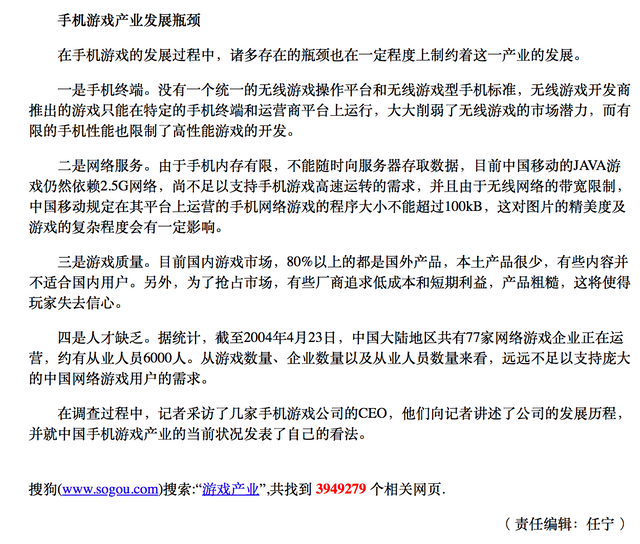
Mobile Game Industry Development Bottlenecks
In the development process of mobile games, the existing bottlenecks have, to some extent, hindered the industry from moving forward.
Mobile Terminals – Without a unified wireless operating platform and wireless game-type mobile phone standard, any games launched by wireless game developers can only be run on specific mobile phone terminals and carriers, which greatly reduces the market potential for wireless games. Limited mobile phone performance also limits the development of high-performance games.
Network Service – Due to the limited memory of mobile phones, they can’t store data to the server when necessary. At present, China Mobile’s JAVA games still rely on 2.5 GB networks — insufficient to support the high-speed operation of mobile games. And due to the bandwidth limitations of wireless networks, China Mobile doesn’t allow mobile online games with sizes exceeding 100 kB to operate on its platform, which will affect the resolution of the images and the complexity of the games.
Game Quality – Foreign products currently take up more than 80% of the domestic game market, and we have very few “made in China” products. So in order to win market share, some manufacturers opt for low-cost, short-term benefits and bad quality games, which makes the players lose faith.
Lack of Talent – According to reports, as of April 23rd, 2004, a total of 77 online game companies were operating in mainland China, equalling roughly 6,000 employees. Based on the number of games, enterprises, and employees, it is far from enough to support the needs of the vast number of Chinese online gamers.
Does this remind you of something?
If you refuse to understand a brand new market because of these types of limitations (which are shared by all early-stage markets), then you’ll probably end up crying yourself to sleep five years down the road.
The Blockchain Game 1.0 Era You Didn’t Know About
November 2017: CryptoKitties Opened the Door to DApp Games
CryptoKitties was the first viral DApp, and also the longest living game DApp. Holding the record of over 14,000 daily active users (December 9th, 2017), it succeeded in paralyzing the Ethereum network. As of April 30th, the total transaction amount equaled 43067.04 ETH, or about 32 million USD.
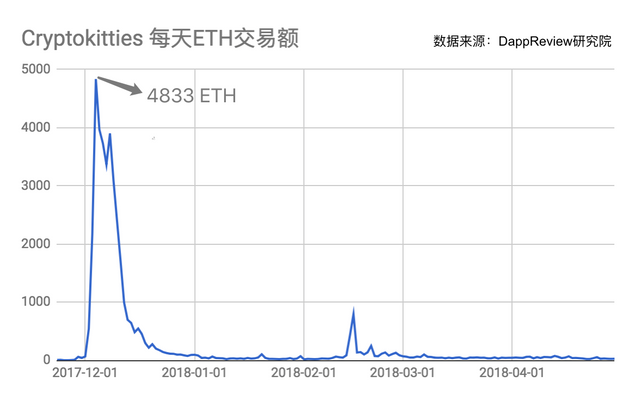
From the perspective of conventional video game players, CryptoKitties was not really a “game”, but a novelty brought by the “transaction attributes” and “unique private assets” of the blockchain. At the same time, this was the first blockchain game with a decent game mechanism and UI design. Other DApps around the same period were still in the prototype or demo stages.
CryptoKitties is a milestone in the development of Ethereum. It proves to everyone that financial DApps are not the only apps that can be built on Ethereum, and it unlocks tremendous opportunities for developers to create and have fun.
As of writing this, there are still about 4,000 transactions and 300–500 active users every day on CryptoKitties.

In early December, my partner TZ and I began to study the genetic synthesis of CryptoKitties, and tried to deduce the logic inside this black box. Eventually, we were able to synthesize a mistletoe cat (which was super rare at the time) and three of the top ten Christmas cats in the entire game.
February–March 2018: Popular Financial Games During the Bear Market
The coin market started to go down starting at the end of January, so coin holders were unable to profit from speculation. This led to the popularity of two types of games. There were, on average, five new game DApps coming out every day in the first quarter of 2018. The first thing I would do every morning is look for these new games and test them out.
Gambling DApps
Etheroll is a simple number betting game, in which players can place bets and have different chances of winning. It was one of the top five most active DApps throughout February. Because of the transparency provided by smart contracts, we can check the code to find out exactly what winning rates the dealer has. In other words, we can be sure that a centralized authority isn’t taking advantage of us. In fact, the Etheroll dealer only has a 1% edge over the players. (So dope.) Other adventurers were placing their bets in the bear market with similar games — well, we can’t blame them for trying.
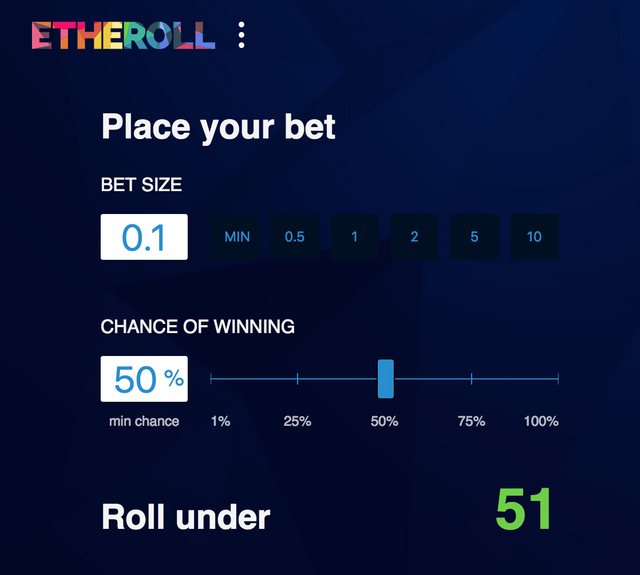
Hot Potato DApps
These types of games revolve around the buying and selling of digital tradable assets (ERC721 tokens), ranging from countries to cities, from colors to emojis, and from celebrities to Lamborghinis. Nearly anything you can think of can become an ERC721 token that you can launch and trade on Ethereum. Out of everything, the one game that most people were crazy about was CryptoCountries. In early 2018, it only took seven days for this monster to accumulate 45,000 ETH worth of transactions — exceeding what CryptoKitties had in 4 months. This was absolutely mind blowing, even to the creator himself!
In CryptoCountries, every country is an individual ERC721 token that any player can purchase. However, the next player must pay a higher price (1.2x) to buy it. The seller takes the difference in price, except for 2–5% of the transaction, which goes to the developer.
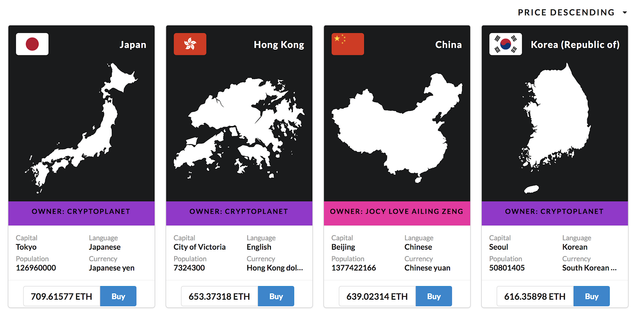
In the early morning of Chinese New Year’s Eve, the “China” token became available for sale. (Clever, huh?) And we witnessed how “China” went from 3 ETH to out of this world. Within an hour, the price had climbed to more than 200 ETH. The next morning, it finally settled at 639 ETH, and no one was making the next offer.
It’s not hard to realize that this is essentially a hot potato game. Everyone except for the last person makes almost 20% profit. And, of course, everyone believes that they won’t be the last buyer, including the actual last buyer.
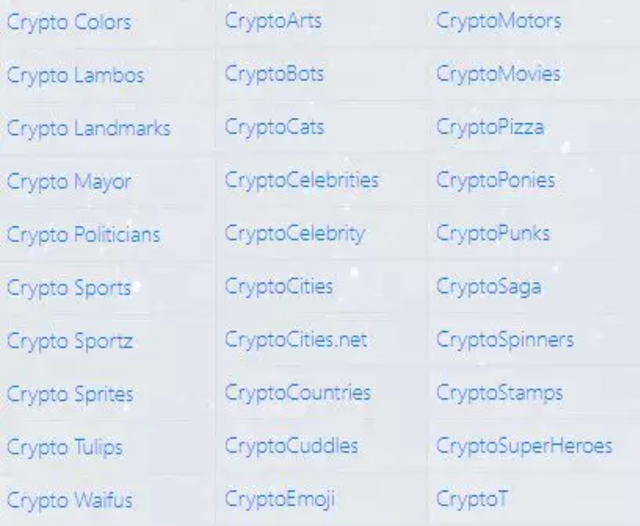
All of the CryptoKitties variations that sprung up during this period
Here, we have the lucky player who faded into the dark with more than 600 ETH and a big smile on his face, as well as the “warrior” who dropped over 700 ETH and stayed there.
Gradually, everyone realized the downside of such games: forced trade, a single mechanism, and digital assets with no long-term value. The number of transactions of similar games that came after just plummeted — a few hundred transactions is all they would see.
So far, on Ethereum, I still own two “countries”, two “paintings by Van Gogh”, and “Benedict Cumberbatch” from CryptoCelebrity. Collectively, I lost about 20 ETH in these games.
The Birth of DappReview
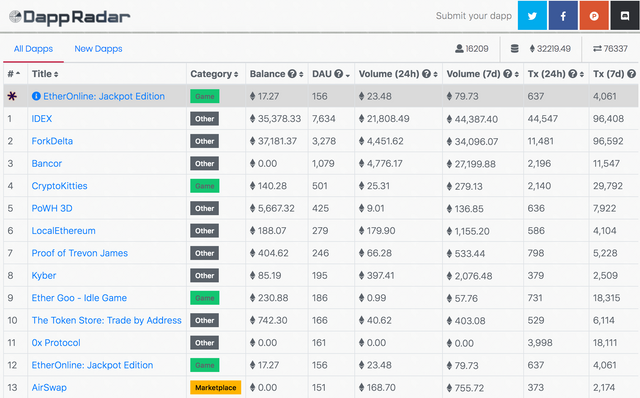
DappRadar.com — the first Dapp-analytics site
On February 3rd, a young Lithuanian man named Skirmantas Januškas registered the dappradar.com domain. In two weeks, he built the first navigation web DApp. From mid-February to early March, I visited DappRadar, as well as the Discord game forum and various crypto games every day. I realized that DappRadar wasn’t user-friendly enough, especially for new DApp gamers.
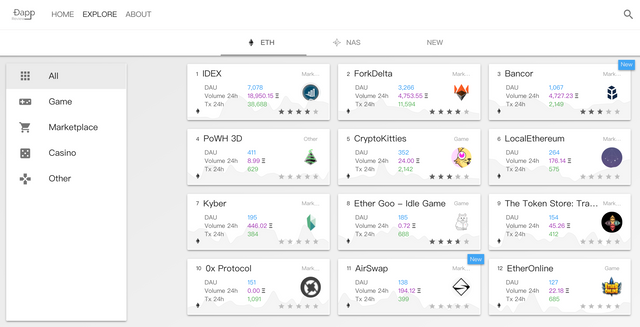
DAppReview — dapp.review
So we decided to build a better DApp navigation and evaluation platform. On March 17th, the day before it went live, I paid $700 for the dapp.review domain, TZ made a logo during his trip in Japan, and we called our friend KK:
“This baby’s ready. Let’s roll.”
April 2018 — Ponzi Schemes Start to Flourish, but Innovative Games Break Through
As the market picked up, gambling games became less attractive. The life cycle of the hot potato games went from two weeks to just a few days due to their single game mechanism.
During this time, a Ponzi-investment game called “PoWH 3D” quietly climbed to the top of DAppReview rankings. Its contract balance reached a maximum of nearly 20,000 ETH (about 8 million USD) in early April, and the number of daily active users peaked at 3,000.
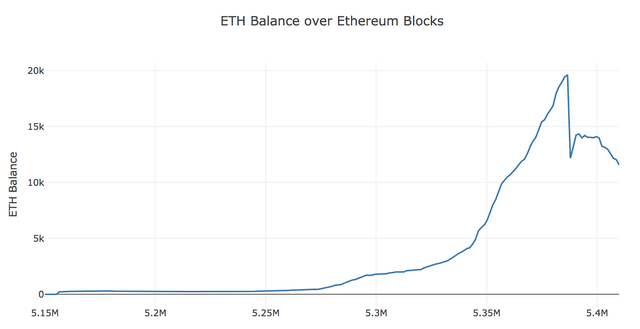
PoWH 3D was born out of the early PoWH project, and its gameplay mechanism goes like this:
Players can use their ETH to purchase tokens in the contract. Each transaction, including buying and selling, will charge a fixed 10% fee. These fees will then be distributed to all the token holders according to the amount of the token they have.
A mechanism like this makes players more willing to stay in the game to collect dividends and continue bringing new players into the game.
In short, the more players that join the game, the more that previous players will earn as long as they stay in game. This is actually a Ponzi scheme in disguise.
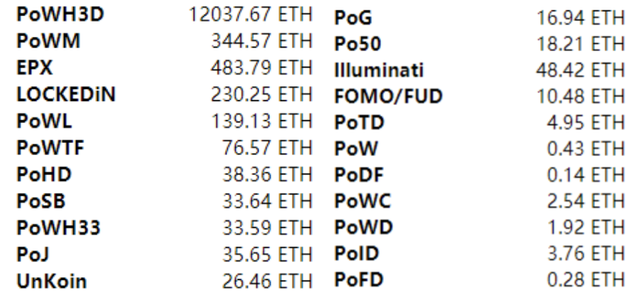
Since the game logic is simple and straightforward and the DApp contract is open source and traceable, tons of games with similar names also started appearing. There was PoWH (Proof of Weak Hands), so it’s no surprise that PoWL (Proof of Weak Legs), PoWC, PoWD, PoSB, PoJ, PoWTF, and even more came after. Cloning costs are extremely low and contract code can be copied directly. So some developers just changed the dividend coefficient to any number between 1% and 99%, without even bothering to change the comments.
Seeing the popularity of this type of game, some people started to develop evil ideas. One developer ran away with 277 ETH just ten minutes after their game launched.
I know you’ve had enough of this depressing news…
So here…
Surrounded by all of these money-driven peers, an independent developer named James quietly built the first blockchain idle game: EtherGoo.
The fresh gameplay mechanism smashed all of those outdated trading and Ponzi games on the market and attracted lots of Ethereum game lovers to come and experience it firsthand. This resulted in Ethereum network congestion by accomplishing more than 40,000 transactions in just a little more than one day!
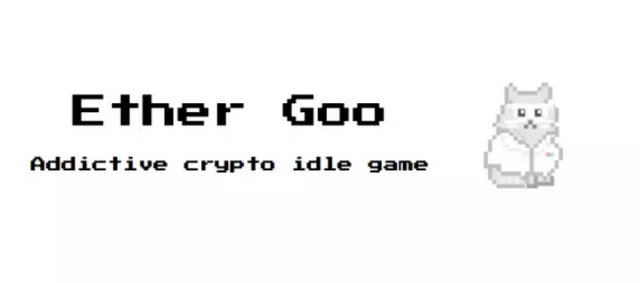
EtherGoo then ranked number one in the game section, with nearly 5,000 daily active users. James is constantly changing the dynamics of the game to extend its life cycle. Until now, EtherGoo still hangs around top three in the games section.
How?
- The free Goo currency and factory production logic lower the barrier to entry and increase the players’ activity.
- The battle-type animals and PvP mechanism enhance the game’s playability, strategy, and player interaction.
- Dividends and lottery mechanisms speak to most of the current mainstream blockchain game players.
EtherGoo’s popularity has reignited the hopes of blockchain game players everywhere. At the same time, games with more complex mechanisms and diverse gameplay have slowly surfaced.
From November 2017 to April 2018, as an in-depth game player and observer, I call this the 1.0 era of blockchain games, as we were still in a time of raw growth. Most creators were individuals or small groups, and many even weren’t professional game developers.
During this period, a lot of Chinese developers were also making attempts, such as CryptoHero, which was the first “made in China” trading game; Myhero9, which had a sophisticated game mechanism; and EtherOnline, which had gained popularity overseas. From individual developers to big game companies, everyone wanted to get a piece of the action. I met with several game companies, game platforms, and game engines over the past two months and definitely felt momentum throughout the industry.
For certain reasons, I can only share with you the most representative games and events from within the past six months — remember, this is only the tip of the iceberg.
The game is on.
What Value Can Blockchain Bring to Games?
Ownership and Liquidity of Game Assets
On the blockchain, players retain ownership of their in-game assets, and these assets have more extensive liquidity. The “karma”, items, weapons, and characters in traditional video games are all owned by the game developers (i.e. the companies), and these centralized authorities have the power to make drastic changes to the assets or even get rid of them entirely.
Traditional in-game assets are limited to the built-in economies of a single game. It seems that they have no value outside of the game. It is also difficult to create use cases for them on a technical level.
In blockchain logic, once in-game assets are put on the blockchain, they can all be attributed to the player’s blockchain address; that player has ownership of the address, hence ownership of the assets.
Let’s imagine the following use cases:
1. Assets Can Be Traded, Anywhere, Anytime
A large number of games don’t have item trading features. Oftentimes, the reasons behind this are to avoid chaos in the in-game economic mechanism, extend users’ gameplay time, and increase income for the developer (i.e. the company).
Assuming the above problems are not of the developer’s concern, then “on-chain items plus a mobile wallet” can be implemented in on-chain and off-chain transactions between two users, anywhere, and at any time.
Say you are chatting with your friend about a recent PC game over dinner. Both of you open your mobile wallets, check out each other’s weapons and armor, and you decide to buy his weapons. The transaction is as simple as using Apple Pay. And at the end of the night, when you go home and log in to your game, you will find your newly purchased weapons sitting in your item list.
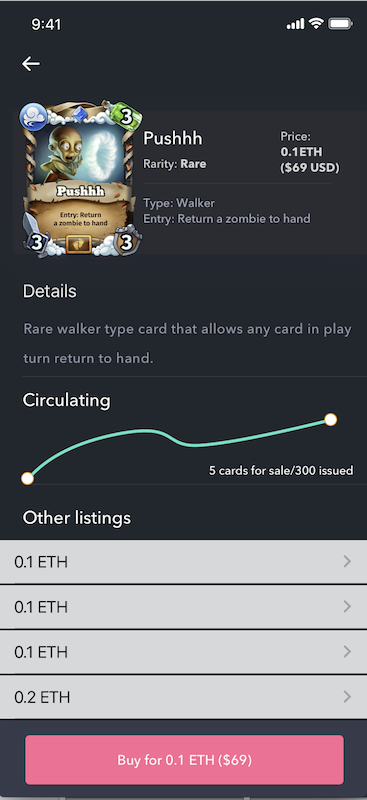
To be more open, item trading is not necessarily confined to a single game. I can use my Thor’s Hammer from Game A to trade your Harry Potter’s Wand from Game B, as long as we have consensus on the value of the items.
In addition, trading is not necessarily limited to one single item, either. In the future, we may be able package all of the assets from one game into a single token and sell the whole thing to another player. The buyer can then unpack the token to see and use the game assets.
2. Reuse of Game Assets
Since on-chain assets are saved under each player’s address, it is easy for developers to reuse the game assets from other games in their own game, or to modify them.
CryptoCuddles is a cat battle game that’s based on CryptoKitties. After a player logs in with their Ethereum addresses, the game will automatically import all of the CryptoKitties characters from that addresses. Only the battle logic is created by CryptoCuddles’ developers.
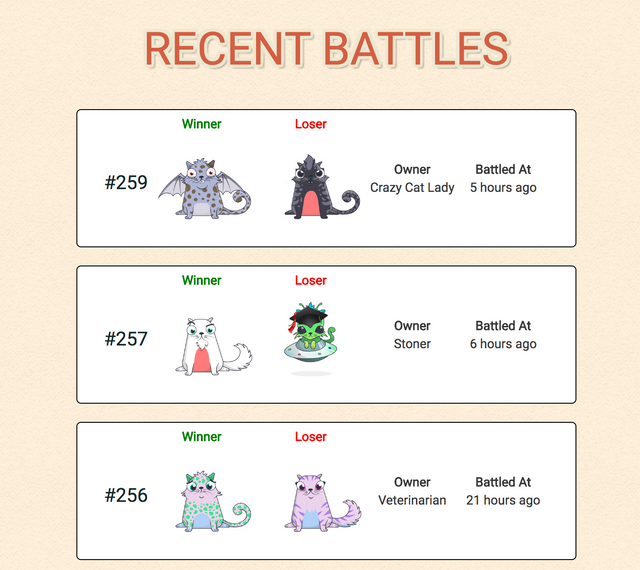
CryptoCuddles uses CryptoKitties’ characters to battle
The reuse of assets is easiest for games using the same ecosystem or IP. For example, if you have several characters from Pokémon, it’s natural for developers to allow you to import all of your character assets into a new game that uses the same IP.
In the case of inter-game and inter-IP operability, reuse of assets requires complex design and collaboration among developers. For example, can you have your city from Minecraft in a game that’s similar to World of Warcraft? Can you import it from an open-world or an open-planet game?
3. A New Way to Get New Users
In the traditional video game world, new games often need to reacquire users, or use old games to divert traffic. The blockchain can make this user reacquisition cheaper and easier — like how CryptoKitties users are all potential CryptoCuddles game players.
If direct reuse of assets involves IP issues, then developers can also reward users who own kitties on CryptoKitties with in-game characters, treasure boxes, items, etc. They just need to use a player’s login address to verify the on-chain data.
In this way, any game can take full advantage of popular games to divert traffic. Coin forking and airdrops use the same strategy — airdropping tokens 1:1 to all ETH or EOS holders, thereby, can help gain users at a very low cost.
DAppReview accumulates more than 100,000 users’ information from more than 200 game DApps. If a new game needs to do a promotion, then the most efficient way would be to airdrop in-game assets to all of these addresses.
The Relationship Between Game Developers and Players
Most of the time, game players and developers often stand on opposite sides. One party wants to take advantage of the in-game dynamics to earn reputation and get more enjoyment out of it. The other party modifies the mechanism and parameters again and again to exploit players.
However, the blockchain breaks this tension by changing the relationship between developers and players. Traditional video games run on centralized servers, where developers set the rules and players try to break them. So, what happens if the game is running on multiple nodes and some are run by players who will also receive incentives?
It is possible for developers and players to form a community as well as a consensus. When some of the nodes are hosted by key opinion leaders of the game, part of a developer’s interest will be highly consistent with that of the game community. Loyal players will spontaneously maintain the balance of the game, help developers attract new users, extend the life cycle of the game, and build up the community together.
Have you ever experienced the heartbreak of a game shutting down? I believe a lot of you may have. For me, my heart was shattered when the Worms Online game stopped operating. Many factors are attributed to the death of the game, including a problem with the game itself and the failure of their agency’s operations strategy. I won’t go into details here.
This game used to have numerous loyal fans who formed their own teams and forums, and key opinion leaders who would make videos and organize offline tournaments. Even today, in a few core Tencent QQ groups, people are still holding grudges about its discontinued operation, which happened more than a decade ago.
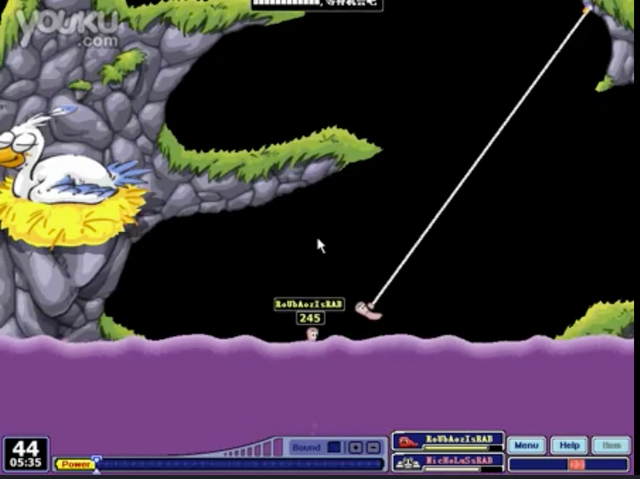
Classic map in Worms — Stone Island
If Worms Online was placed on the blockchain today, the results might be different. On one hand, a node operator who represented the players would have a say in the gameplay mechanism and operations strategy. And they could offer suggestions to the developers, which would have never been heard in the past.
On the other hand, even if one day, the developer pushes an update that doesn’t impress the community, the community members can still vote with their feet, fork from the original game, and take it in a new direction according to the will of the community.
It’s like a private server run by the community nodes. To a certain extent, the blockchain may bring unprecedented freedom and democracy to games.
Game Mechanism with More Transparency
When the core mechanism of the game is put on chain, players can view the rules (which were once locked in a safe at some company). This builds a stronger bond between developers and the players.
Note: Smart contracts are not “immutable” on the technical perspective, and some of the game rules can be parameterized to provide users with a way to view the parameters. Through multiple contract interactions, the main contract stores data and invokes sub-contracts, and multiple sub-contracts write the game’s core rules mechanism. If the mechanism needs to be updated, the core data in the main contract does not need to be migrated. Only the sub-contract address needs to be changed, so the migration cost is lower.
With the transparent logic of the game mechanism, the player can know certain things, such as the rate of getting rewards from a treasure box, the rareness of a weapon, and whether the developers are operating as promised.
Since traditional video games hide their source code, they can arbitrarily modify them without the players’ consent. “The one and only Santa Claus” may all of a sudden become everyone’s grandpa without anyone knowing what happened. This is really common in traditional video games, but in the world of blockchain games, it will no longer be the case.
A fair and just mechanism — plus the game updates that have been agreed upon by the community — give players a purer experience.
The Key
It has not yet been discovered. Maybe a geeky Russian teen, an independent developer in Chengdu, or you yourself have a groundbreaking idea — or you’re on the way to an implementation that will redefine what “blockchain + game” means. Once this key is discovered by someone and made public, I believe everyone will be greatly inspired, and it will lead to a turning point in the blockchain game explosion.
What Challenges are Posed to Game Developers?
How Do You Monetize?
This is an inevitable question. Game developers need to make a living and they need to increase the company’s commercial value. Perhaps after reading the above four aspects, most people in the game industry will be like, “Whaaaaat?! How am I supposed to make a profit then?”
Due to the increased liquidity of in-game items, they might only be able to make x amount of money, instead of 100x, like before. The traditional locked-safe strategy allures players to continue spending money and testing their luck. Now that all of this will be open to the public, who’s gonna be stupid enough to pay for that?
Indeed, from the standpoint of developers, these questions are very substantial. But the problem is, we are still applying such traditional logic to a new concept. We need to think out of the box and break some assumptions. Past experience will be a good reference, but it won’t provide practical solutions.
With the Internet, we went from free access to premium services, and then to traffic monetization. We’ve all been there to witness the transition from buyout to regular subscription.
Each iteration of new technology will more or less have an impact on the monetization of the existing system. Similarly, the blockchain is no exception.
From my current understanding, in addition to the income from opening treasure boxes and card decks, taking a certain percentage of every transaction is wayyyyyy more suitable for people to monetize on the blockchain.
The blockchain itself allows game assets to be extremely liquid — remember how I mentioned they could be traded anywhere, and at any time. If a game provides players with tremendous room for creation, then there will be a large amount of user-generated content, and the value of this content will be agreed upon by the players.
In this framework, developers provide the underlying logic for content generation, and users provide valuable content. Then content can be traded between players, and the developers can take a portion of each transaction.
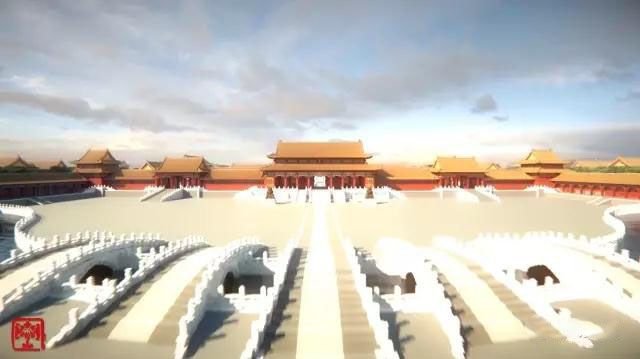
Team project by “National Architects” — Forbidden City
For instance, countless players have transformed into architects and built, one after another, majestic miracles in Minecraft. With infinite possibilities, some built railways, some made a calculator with logic circuits, and some even implemented Minesweeper.
A team of “National Architects” actually replicated The Forbidden City (search for “国家建筑师” on Bilibili for video clips). A lot of people wish they could have The Forbidden City mod, or even modify it. But Minecraft doesn’t have a mod trading feature, so we can only admire other people’s creations by watching videos. What a pity!
If content is only generated by the developers, it can’t go far in the blockchain world. In this highly-liquid, player–community world, I think we need to give more freedom to players and communities, so they can achieve greater commercial value.
Can a Hearthstone-type game allow node runners to issue cards that can be voted on by the community and other nodes? Can a pet keeping game allow users to design a pet’s costume and share it with other players?
Whether or not there are other ways of monetization, it is a question that developers need to spend more time on. No matter what, the main goal is to create more means of liquid value.
The Real Challenges
Numerical Game Design vs. Tokenomics
Numerical game design is a way to adjust parameters and algorithms, in order to ensure balance and extend game time in traditional games. The complexity increases exponentially when applied on the blockchain. Because the economic system is no longer a closed loop, it is necessary to consider the interactions with the entire blockchain ecosystem.
Once game assets are put on chain, we will need a token economy. That means the gold coin system in the game will be indirectly linked to a real world currency. If the asset tokens can be increased indefinitely, then the corresponding game assets may depreciate indefinitely.
The token economy requires careful design. This design must focus on the macro and micro perspectives, and must be combined with the gameplay mechanism. It should answer questions like:
How are the tokens generated? How are they distributed, consumed, and destroyed? How is the token value determined? How are they exchanged for other currencies like ETH?
Imagine for a second that ETH is USD, and imagine that a token issued by a game on Ethereum is the currency of some country. If the exchange rate between the two is not stable, or if there is an opportunity for exploitation, then might we see an economic system that could be used to kill a game from the secondary market, like George Soros short-selling Baht?
Yes, it’s possible.
If the system is designed well, it can give players more incentive to make the game assets circulate and appreciate. If not, then it’s going to be a devastating blow to the game.
The Blockchain’s Fundamental Infrastructure is Not Perfect
This is a phased issue and not a long-term issue. As mentioned at the beginning of the article, in the initial stages of the mobile game industry, an uncertain ecosystem, priority of network performance, and low installation capacity were all problems. But these things do not mean that you can’t create a fun game.
Back to the Essence of the Game
Modern gaming technologies and platforms have been around for decades, but the essence of the game has never changed: fun.
I spent a lot of time explaining the advantages of blockchain-based games, but even if you created a game on the blockchain, yet it’s no fun, then you wouldn’t get any players, let alone the community and consensus that give in-game assets their value.
There will still be a lot of people saying that the blockchain infrastructure is not capable of allowing games to be fun, but I don’t agree with that.
There were fun games in the era of 2G mobile networks, the era of Win95, and the era of GameBoy. We still enjoy many of them to this day. You can’t judge a book by its cover. Likewise, you can’t judge a game by its packaging.
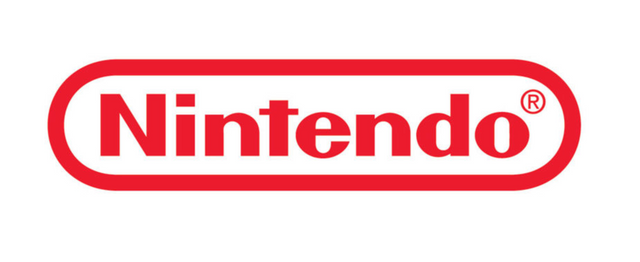
There is only one company, in my opinion, that has constantly come out with great, fun games: Nintendo. It’s not an exaggeration to say that most game companies still have a long way to go to catch up with this 128-year-old company.
In 2005, with the tough competition among next-generation game consoles, Sony’s PS3 and Microsoft’s Xbox 360 crushed Nintendo’s Wii in host performance. A number of gaming media outlets claimed that it was game over for Nintendo. Well, it turns out they were all wrong.
Wii became the best-selling game console in the same period with its innovative motion sensing gameplay and powerful game lineup.
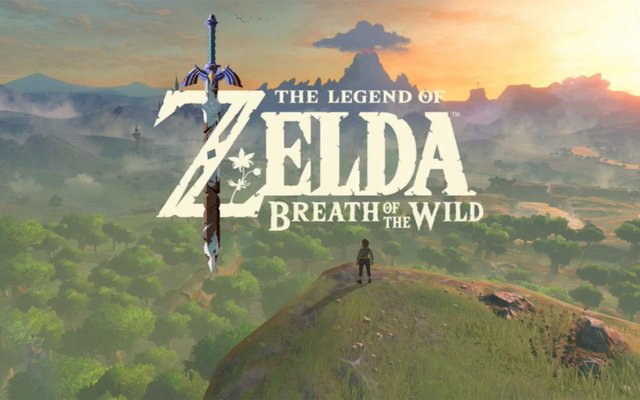
The Legend of Zelda: Breath of the Wild
For other games, I could write a long evaluation to tell you all about the battle mechanisms and storylines that make them good games. But for Nintendo, whether it is last year’s The Legend of Zelda: Breath of the Wild or the “LABO” of this year, I can hardly evaluate or describe it.
It’s just fun. It’s freaking FUN!
For the idea of “blockchain + games”, instinctive resistance and criticism are inevitable. The new underlying technology will give games more possibilities and breakthroughs, but the essence of games remains unchanged.
Only in the early stages of an industry, everyone has the opportunity to enter. Once the big names enter the industry and the infrastructure is set — do you still have the opportunity?
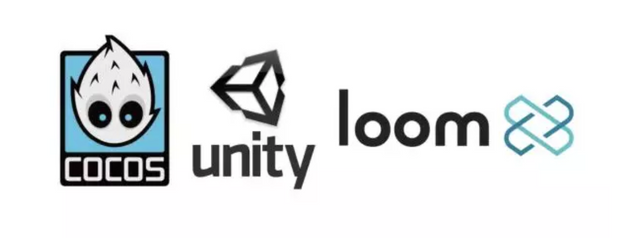
In addition to those game DApps on Ethereum, we also have Cocos and Egret engines, Loom’s sidechain solution for scaling, and Enjin + Unity’s on-chain items. There are a large number of public game chains in full-swing development, some small game studios in rapid trial-and-error development, and some big name game companies that are secretly making moves.
The token ecosystem has penetrated every corner of the blockchain. I believe, in one year, the first real killer DApp will be here. Let’s wait and see.
This article brings together some of my thoughts over the past 6 months, many of which deserve their own in-depth article. Given limited time and space, I hope this article can be more or less useful for you.
If you find this article helpful, a little donation would be well appreciated :)
ETH Address: 0xea5ABc1a1689984EbFDC41130886BdAEB5c24078
Coins mentioned in post:
Congratulations @vincent222! You received a personal award!
Click here to view your Board of Honor
Congratulations @vincent222! You received a personal award!
You can view your badges on your Steem Board and compare to others on the Steem Ranking
Vote for @Steemitboard as a witness to get one more award and increased upvotes!